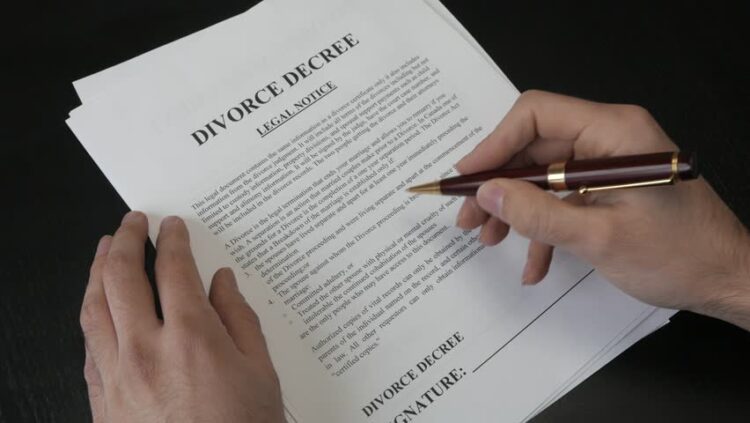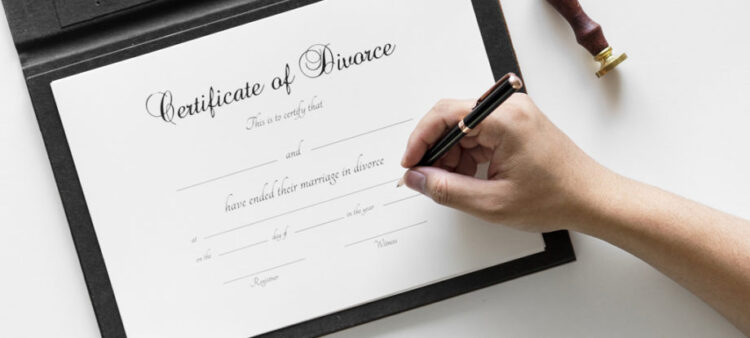Alright, so it happened – you’ve decided that the best outcome for your existing problems with your spouse is separation and the decision is final. Do thousands of doubts and questions overwhelm you, making you anxious and extremely confused? Not sure which steps you should take nor where to go or whom to speak to? No worries, those are normal feelings. It’s a very complicated moment from the emotional point of view since many situations are mixed and you’ll probably want it to end as soon as possible.
In the very first moment in which you begin to think about it, you might feel a little lost, without knowing where to start. Leave or stay, is it really better to go your own separate ways, how to tell children? The fundamental objective must always be to carry out the separation proceedings through friendly means and to protect the interests of the children if you have them. In this article, we’ll guide you through some key steps to follow in order to get through this without making mistakes along the way.
Seek legal advice

The first step if you wish to proceed with this process is to inform yourself what your options are. This means obtaining an objective opinion about the more convenient option – only separation or a full divorce process – and what are the rights that you and your children attend in important matters. Making hasty decisions can have negative consequences that can harm you and which you can later regret, so, simply don’t rush and ask a professional for advice. Before doing any procedure, you should go to a lawyer to guide you on the most important aspects that you should agree on with your ex-partner.
Each family is different and as such, the solutions to their conflicts are also different. Therefore, the first thing we advise you is to consult with a lawyer who can advise you on the best options for you and your children. A personalized consultation will help you to be clear about your rights and not to make decisions that may harm your family. If you have concerns about all that, you can find out more about the services that professionals can offer here.
Avoid sticking to other’s situations – they’re not the same
Sometimes clients arrive at the lawyer’s office with preconceived ideas after “consulting” friends, neighbors or relatives who have gone through the same situations. Phrases like “My cousin’s ex pays one hundred euros for child support, why do I have to pay more?” are the daily scenario of lawyers and, in most cases, they are wrong.
Your family is not like your friend’s family, your cousin’s or anyone else’s. These families have houses, salaries, ages and conditions that are probably different from those around you and also from your own situation. Therefore, thinking that your process will be resolved in the same way is the wrong way of thinking.
Gather all documentation you might need

The next step is to gather the documents that you’ll have to bring to the Court along with the divorce petition. The essential documents necessary to request are:
- Marriage certificate. It can usually be requested in the Civil Registry in which the marriage was registered. If you have an electronic ID or a digital certificate you can also apply online at the Electronic Office of the Ministry of Justice.
- Birth certificate of the child (children), in case you have them. It can also be requested in the Civil Registry in which the birth of the child was registered. A small reminder: don’t forget to take your ID with you to identify yourself as the legal parent, or otherwise the certificate won’t be issued.
In addition to these two basic and key documents to request a divorce, we advise you to gather all the contracts, bills or deeds that may be relevant. These also include car papers, housing deeds, rental agreement or mortgage contract.
Think about the ideal regulatory agreement
You already have the papers and you know what rights you have. It’s time to start thinking about what you want to achieve with all this and how you want things to be after the separation. The regulatory agreement is the document that will include all aspects related to child custody, family housing, and many more things. You can negotiate directly with your ex-partner or do it through your lawyers.
Who’ll stay in the common house? Have custody of the children? How many days of visit will the parent who has no custody be able to spend with the child? How will the common goods be distributed, and will there be any compensation? Many questions, right? All of them need to be resolved in the process. Therefore, together with the petition requesting a divorce, the proposed solutions to these questions must be presented.
File the divorce petition

Once you have consulted with a lawyer, you have gathered all the necessary paperwork and you have put your proposals on paper, it’s time to go to a lawyer to file the divorce petition. Here two things can happen:
If it’s by mutual agreement, it’ll only be necessary to file a claim accompanied by the regulatory agreement signed by both spouses. This procedure is the simplest and most economical since a trial is not held. You’ll simply have to present the claim and, when summoned, present you in the Court to sign your agreement. In a few days, the decree or divorce decree will be issued, and this will be communicated to you from the Court. From that moment, you will be legally divorced.
Also, since there’s no trial or conflicting interests to be by mutual agreement, you can both go to the same lawyer and use the same attorney, which will greatly reduce the costs of divorce.
However, if it’s contentious (or in other words, without agreement), both of you need to have a lawyer to assist you. If you’re the one who’s going to start the process, you should go to a lawyer with the documents that we mentioned in previous sections and your proposals on custody, housing, etc. This way the lawyer can include them in the petition. Once the claim’s filed, the Court will notify your spouse that he’s been sued, and they’ll be given a period of 20 days to present their response to the petition.
It’s time for the trial
The last step is the divorce trial. This final proceeding only occurs in contentious divorce proceedings. It’s because, as we previously said, in case of the mutual agreement there’s no trail.
When the day comes, you’ll both have to appear in the Court accompanied by your respective lawyers. If there are minor children in common who are over 12 years old, the judge will also request to hear their opinion. In a few days you’ll receive the final divorce decree and become officially divorced.
Also, if you have minor children, it’s most likely that before the trial day you will need to perform some additional procedures such as a psycho-social exam or interviews with psychologists. This happens so that the judge has tools to assess the circumstances of your family and decide what option is best for the children.
Of course, divorce will definitely NOT be the most pleasant moment of your life. It will probably be stressful, full of hassle and many things to resolve. Following these steps will ensure that you get informed about all the things you need to prepare in order to make this process less exhausting and carry on with your everyday life.
 Hi Boox Popular Magazine 2024
Hi Boox Popular Magazine 2024



